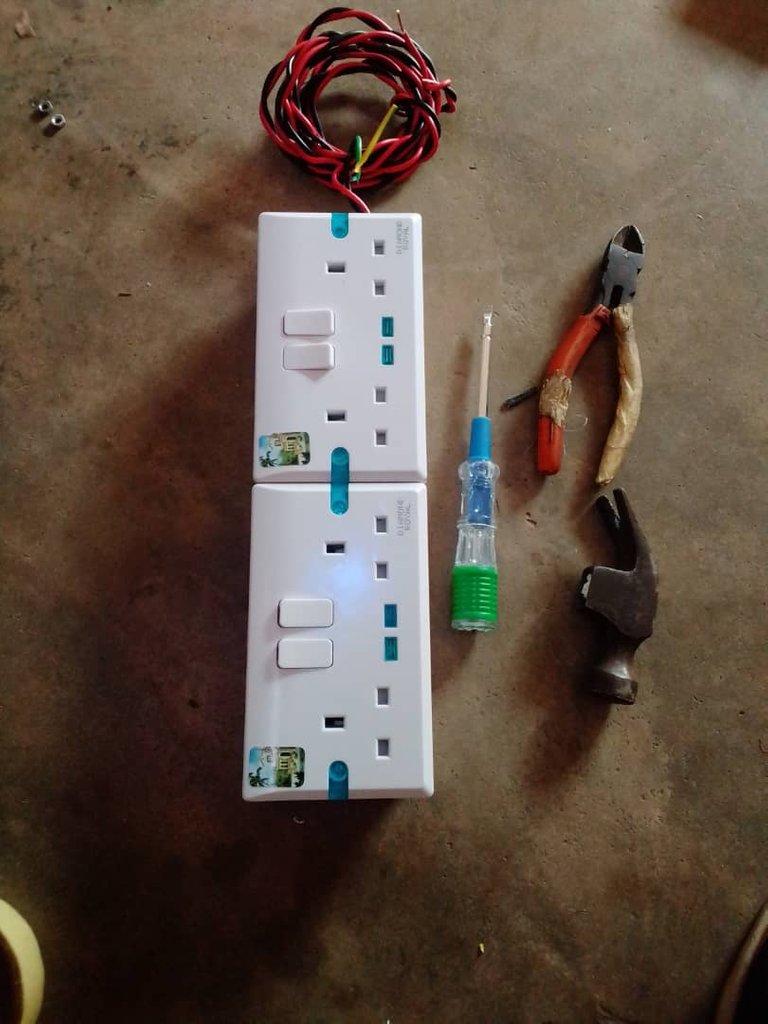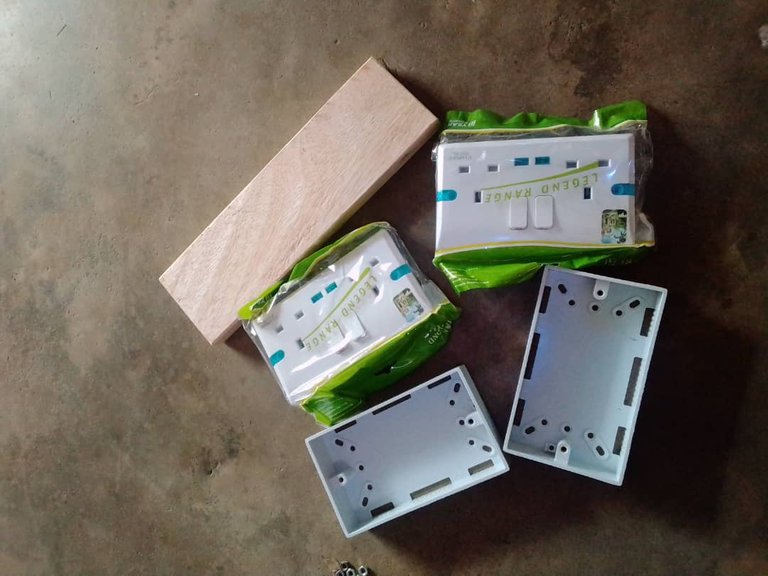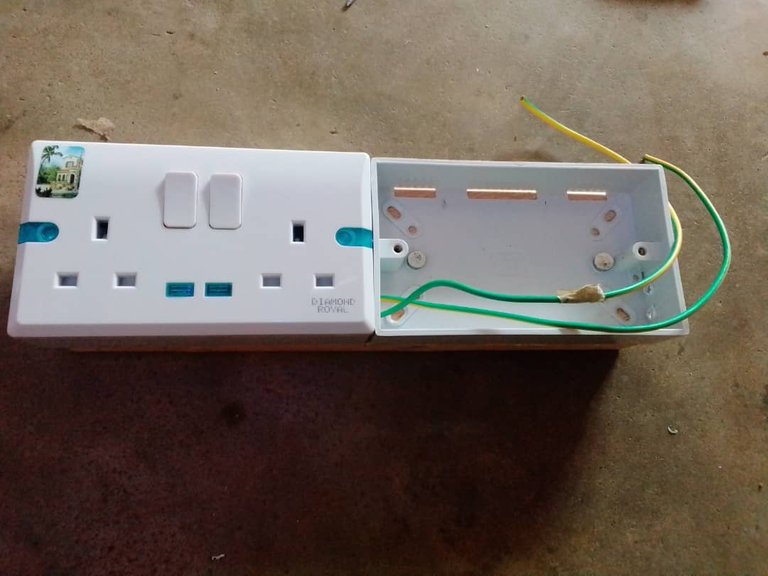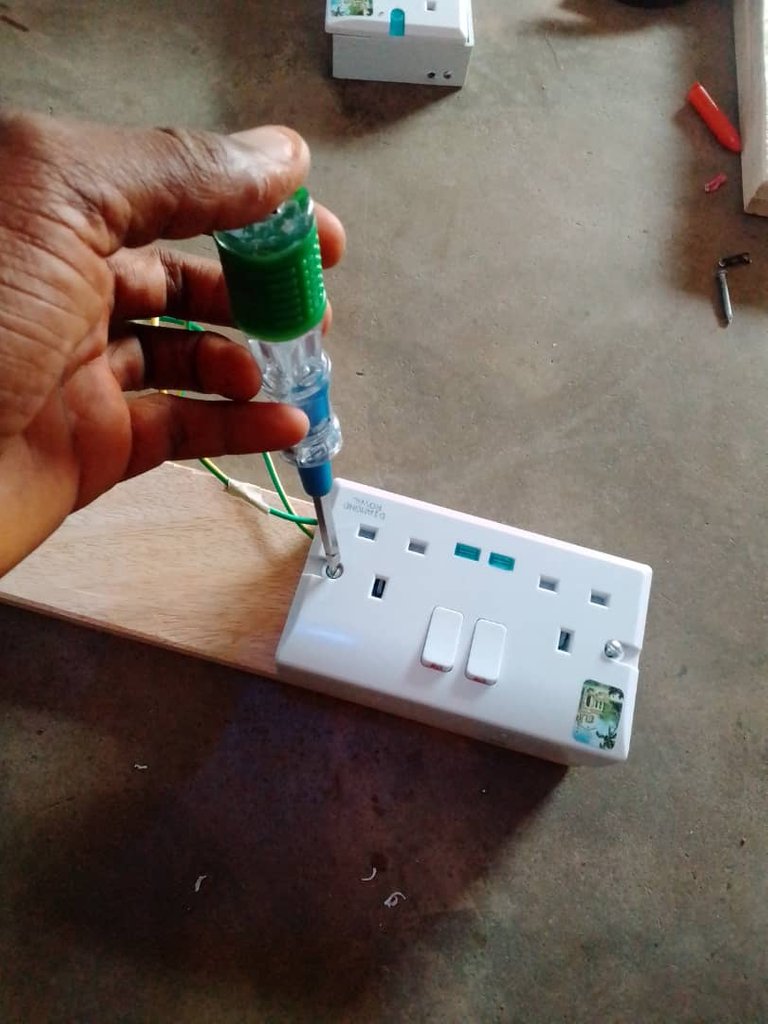One of the greatest things ever is to always cherish some of the skills one acquired either through education or by training because no knowledge is a waste as far as life is concerned. Before I will proceed in this writing, I will like to thank every member of this community, and most especially @build-it and @pialejoana for their effort in making sure that things are done properly within the community just like others. This will be the second time I’ll be posting in this community but from now on, I’ll be sharing posts on weekly basis in the community.

Like I said from the beginning how I made a 3 by 6 socket extension for my neighbor. It came as a surprise to my neighbor because he never knew that I have some knowledge about electrical and how it works not until today when he was complaining to me that most of the extensions that he has been buying from the market used to burn within some weeks from the day it was bought.

After his explanations to me about how his extensions used to burn. According to his explanations, I understood that it was not really his fault but on the type of extensions he used to buy from the market and based on the current capacity of the appliances he is always using with the extensions.

I also explained to him that most extension gotten from the market has their voltage input and output current capacity and if you plug any higher appliances than the strength voltage capacity that the extension was properly designed by the manufacturers to carry that it could lead to such extension burning.

I told him that appliances like electrical iron, electrical cooker, boiler, air conditioning, freezer, washing machine, and some other strong electrical appliances must be avoided to be used with the extensions will use to buy from the market if you really need the extension to last for you. Extensions are only meant to carry low voltage appliances like television, sound system, laptops, phone chargers, and a few more.

After my explanations to my neighbor about how some extensions function. I also told him that I will build 3 by 6 socket extensions for him today to enable him be plugging strong appliances. Sometimes, people don’t like going for this type of extension but as an electrical technician, I’ll advise that this is the best to be used for strong appliances because it is built with strong voltage output and it also tolerates strong current flow through its 2.5mm single wire attached to it.

Materials and tools used in building the 3 by 6 socket extension:
A 3 by 6 patress was used.
A 3 by 6 flush socket was also used.
2.5mm single cuitice wire was used.
Wood was used.
Screw and nails were used.
Tester and screwdrivers were used.
Plier was also used.

Procedures on how the 3 by 6 socket was made:
I first determine the type of socket extension to make.
I also determined the type of electrical materials and tools to be used.
I have to open the mouth of the wooden material used to enable the easy flow of the screw.

I have to tight the 3 by 6 patress to the wood using a screw.
I have to open one side of the patress where the wire can pass through.
I have to fix the 2.5mm single cuitice wire to the flush socket by fixing one single wire to the N symbol and the other to the L symbol.
I have to test run the wire by plugging it into the light.
I have to use a tester to make sure that there’s a current flow in the socket extension built.
I have to cover the 3 by 6 socket built.





